-
 Bitcoin
Bitcoin $102,881.1623
-0.60% -
 Ethereum
Ethereum $2,292.8040
-5.48% -
 Tether USDt
Tether USDt $1.0004
0.02% -
 XRP
XRP $2.0869
-2.02% -
 BNB
BNB $634.6039
-1.35% -
 Solana
Solana $136.1527
-3.00% -
 USDC
USDC $1.0000
0.01% -
 TRON
TRON $0.2728
-0.45% -
 Dogecoin
Dogecoin $0.1572
-3.70% -
 Cardano
Cardano $0.5567
-5.07% -
 Hyperliquid
Hyperliquid $34.3100
-1.20% -
 Bitcoin Cash
Bitcoin Cash $462.5691
-2.33% -
 Sui
Sui $2.5907
-5.21% -
 UNUS SED LEO
UNUS SED LEO $8.9752
1.13% -
 Chainlink
Chainlink $12.0549
-4.93% -
 Stellar
Stellar $0.2381
-2.36% -
 Avalanche
Avalanche $16.9613
-3.47% -
 Toncoin
Toncoin $2.8682
-2.36% -
 Shiba Inu
Shiba Inu $0.0...01095
-3.70% -
 Litecoin
Litecoin $81.8871
-2.43% -
 Hedera
Hedera $0.1377
-5.36% -
 Monero
Monero $310.8640
-0.68% -
 Ethena USDe
Ethena USDe $1.0007
0.03% -
 Dai
Dai $1.0001
0.03% -
 Polkadot
Polkadot $3.3103
-5.19% -
 Bitget Token
Bitget Token $4.2168
-1.95% -
 Uniswap
Uniswap $6.4643
-8.14% -
 Pepe
Pepe $0.0...09329
-7.42% -
 Pi
Pi $0.5111
-5.23% -
 Aave
Aave $235.2340
-5.77%
How to discover early opportunities through on-chain data of NFT projects?
Analyzing on-chain NFT data—like wallet activity, transaction volume, and smart contract interactions—can uncover early opportunities by revealing market trends and user behavior before they appear off-chain.
Jun 22, 2025 at 08:42 pm
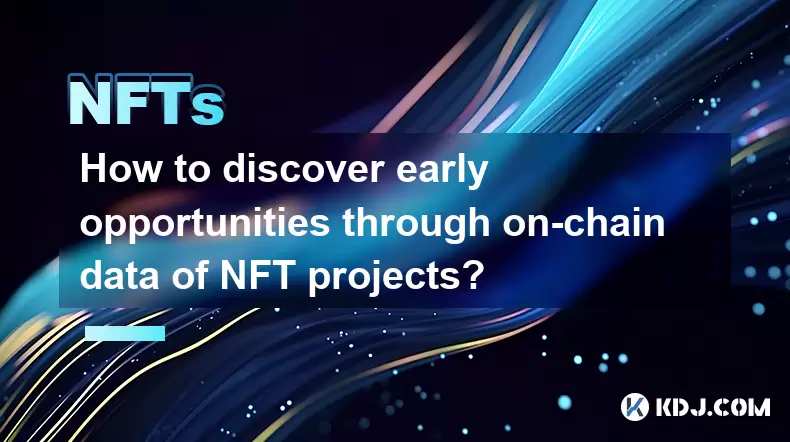
Understanding On-Chain Data in the NFT Ecosystem
In the world of NFTs (Non-Fungible Tokens), on-chain data refers to all the publicly available blockchain information that records transactions, ownership, smart contract interactions, and other activities related to NFT projects. This data is stored on decentralized ledgers such as Ethereum, Solana, or Polygon, depending on the platform where the NFT project operates. Unlike traditional financial markets, blockchain provides a transparent and immutable record of every action taken by users, making it a powerful tool for analysis.
By studying this data, investors and collectors can gain insights into market trends, user behavior, and project activity before these factors become apparent through off-chain indicators like social media buzz or news coverage. The key lies in interpreting this data effectively to identify early opportunities—projects with strong fundamentals and growing interest that may not yet be widely recognized.
Key Metrics to Monitor in On-Chain NFT Data
To discover early opportunities, one must focus on specific metrics derived from on-chain data:
- Wallet Activity: Tracking the number of unique wallets interacting with a project’s smart contract can reveal increasing interest. A sudden spike in new wallet addresses might indicate a rising floor price or increased trading volume.
- Transaction Volume: Monitoring the total value of transactions over time helps gauge liquidity and market demand. An uptick in volume without a corresponding increase in public awareness could signal early adoption.
- Holding Patterns: Analyzing how many NFTs are being held versus listed for sale gives insight into confidence levels among holders. A high retention rate often suggests long-term belief in the project’s value.
- Distribution of Ownership: If a small number of wallets hold most of the supply, it may indicate centralization risks. Conversely, broad distribution can point to community-driven growth.
- Smart Contract Interactions: Frequent calls to a project's contract suggest active engagement, which may precede announcements or updates that drive value.
These metrics should be evaluated together rather than in isolation to form a comprehensive view of a project’s potential.
Tools and Platforms for On-Chain NFT Analysis
Several platforms specialize in extracting and visualizing on-chain NFT data:
- Etherscan (for Ethereum-based NFTs): Allows users to explore individual transactions, contracts, and token transfers. It also provides analytics tools for tracking wallet behaviors and contract events.
- Dune Analytics: Offers customizable dashboards that aggregate blockchain data. Users can create queries to extract specific patterns, such as new mints or large transfers.
- Nansen: Provides enriched on-chain data with wallet labeling features. It helps identify whales, funds, and known entities, allowing analysts to track their movements within NFT ecosystems.
- Messari On-Chain: Focuses on transparency and provides detailed reports based on blockchain activity across multiple networks.
Using these tools requires familiarity with query languages like SQL for Dune or understanding blockchain explorers. Beginners should start with pre-built dashboards and gradually build custom queries as they become more comfortable.
Identifying Early Signals Through Wallet Behavior
One of the most telling signs of an emerging opportunity lies in the behavior of wallets associated with influential players. These include venture capital firms, well-known collectors, or automated bots that often enter projects early.
To detect such signals:
- Use platforms like Nansen to filter transactions involving labeled wallets.
- Monitor newly created wallets that begin acquiring significant quantities of a particular NFT collection shortly after minting.
- Observe if large holders are accumulating or selling off assets, which can influence market sentiment.
- Look for repeated interactions between a small group of wallets, potentially signaling coordinated buying or insider knowledge.
It’s crucial to cross-reference this data with other sources to avoid false positives. For example, some wallets may appear active due to automated processes unrelated to investment decisions.
Interpreting Minting and Listing Trends
The initial phase of an NFT project—its minting period—is critical for identifying momentum. High participation during minting can be a precursor to future value appreciation.
To interpret minting data:
- Analyze the speed at which NFTs are minted; rapid sell-outs often reflect strong community support.
- Check for gas wars during minting, which may indicate high demand and competition among buyers.
- Review secondary market listings shortly after minting; a quick listing wave could mean speculative flipping, while low listings suggest hodling behavior.
On the flip side, low minting participation or immediate dumping after minting may indicate poor project quality or lack of interest. These patterns help distinguish promising projects from speculative noise.
Frequently Asked Questions
How reliable is on-chain data compared to off-chain metrics?
On-chain data is generally more reliable because it is immutable and cannot be manipulated easily. Off-chain metrics like social media followers or website traffic can be inflated or falsified, whereas blockchain transactions offer verifiable proof of activity.
Can I track on-chain data for free?
Yes, several platforms provide free access to basic on-chain data. Tools like Etherscan and OpenSea allow users to inspect transactions and wallet histories without cost. However, advanced analytics and real-time alerts typically require paid subscriptions or premium accounts.
What should I do if I notice suspicious activity in on-chain data?
If you detect unusual spikes in transaction volume, concentrated ownership, or sudden whale movements, consider further investigation. Cross-check with community forums, Discord channels, and official announcements before making any investment decisions.
Is it possible to automate the monitoring of on-chain NFT data?
Yes, automation is achievable using APIs provided by platforms like Alchemy, Infura, or Moralis. Developers can build scripts to monitor specific events or wallets and set up alerts via email or messaging apps when certain conditions are met.
Disclaimer:info@kdj.com
The information provided is not trading advice. kdj.com does not assume any responsibility for any investments made based on the information provided in this article. Cryptocurrencies are highly volatile and it is highly recommended that you invest with caution after thorough research!
If you believe that the content used on this website infringes your copyright, please contact us immediately (info@kdj.com) and we will delete it promptly.
- Trump Family's Crypto Empire: From Skeptic to Kingpin?
- 2025-06-23 00:25:12
- BlockDAG, Cardano, and Polygon: Decoding the Crypto Buzz in the Big Apple
- 2025-06-23 00:45:12
- Avalanche, Filecoin, and Web3 Storage: A New Era for Decentralized Applications
- 2025-06-23 00:25:12
- Erin Redwing & WBD922: Decoding Crypto's Cosmos and the Dogwifhat Craze
- 2025-06-23 00:45:12
- Dogecoin, Pepe, and DeFi: A New York Minute on Crypto's Wild Ride
- 2025-06-23 00:50:12
- XLM Price Prediction, June 22: Will Stellar Break Out?
- 2025-06-23 01:05:12
Related knowledge
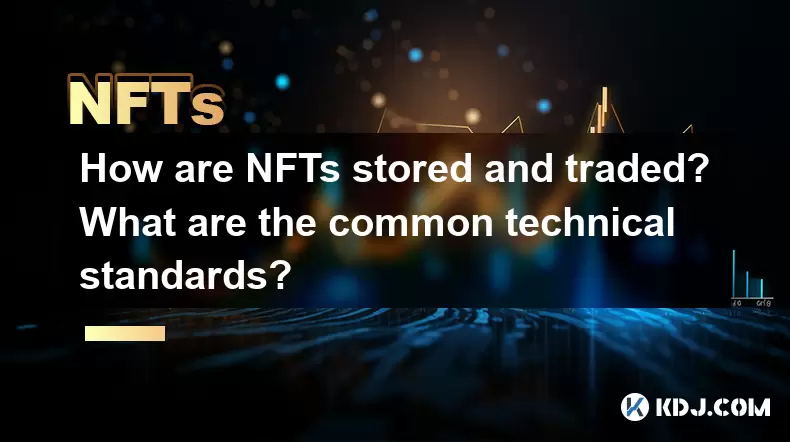
How are NFTs stored and traded? What are the common technical standards?
Jun 20,2025 at 08:49am
Understanding NFT Storage MechanismsNon-Fungible Tokens (NFTs) are digital assets that represent ownership of a unique item or piece of content, such as art, music, videos, or virtual real estate. The way NFTs are stored is crucial to their security and accessibility. Most NFTs are built on blockchain platforms like Ethereum, and the actual file—such as...
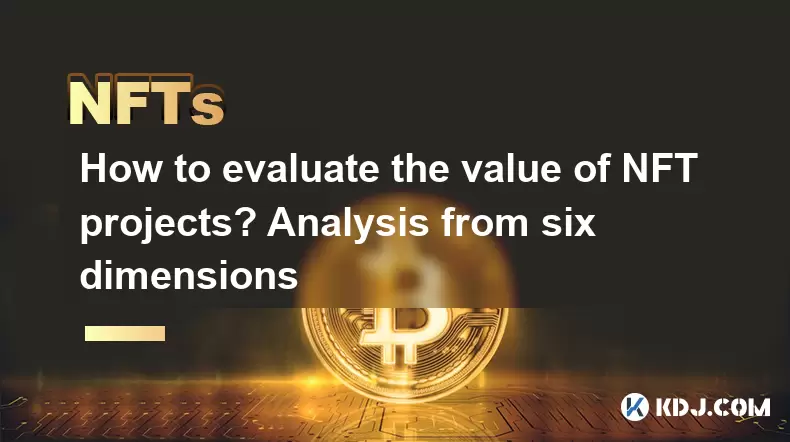
How to evaluate the value of NFT projects? Analysis from six dimensions
Jun 21,2025 at 02:28pm
1. Project Background and Team CredibilityEvaluating the value of NFT projects begins with a thorough understanding of its background and team composition. A credible project is usually backed by experienced developers, designers, and marketers who have a proven track record in blockchain or digital art industries. The presence of identifiable team memb...

What is the difference between NFT and digital collectibles? A must-read guide for beginners
Jun 19,2025 at 09:42pm
Understanding the Basics of NFTsNFTs, or Non-Fungible Tokens, are unique digital assets that represent ownership of a specific item or piece of content on the blockchain. Unlike cryptocurrencies such as Bitcoin or Ethereum, which are fungible and can be exchanged one-for-one, each NFT has distinct properties and cannot be directly replaced by another to...
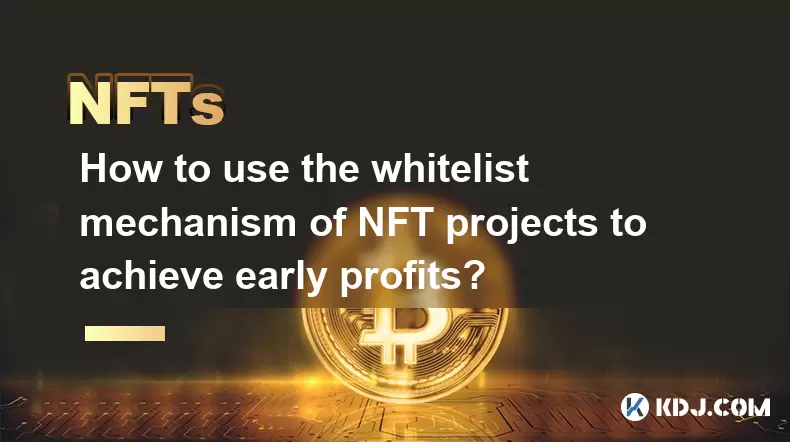
How to use the whitelist mechanism of NFT projects to achieve early profits?
Jun 21,2025 at 03:49am
Understanding the Whitelist Mechanism in NFT ProjectsThe whitelist mechanism is a popular strategy used by NFT project developers to allocate early access or exclusive minting rights to a select group of users. This system allows participants on the whitelist to mint NFTs before they are released to the general public, often at lower prices and with few...
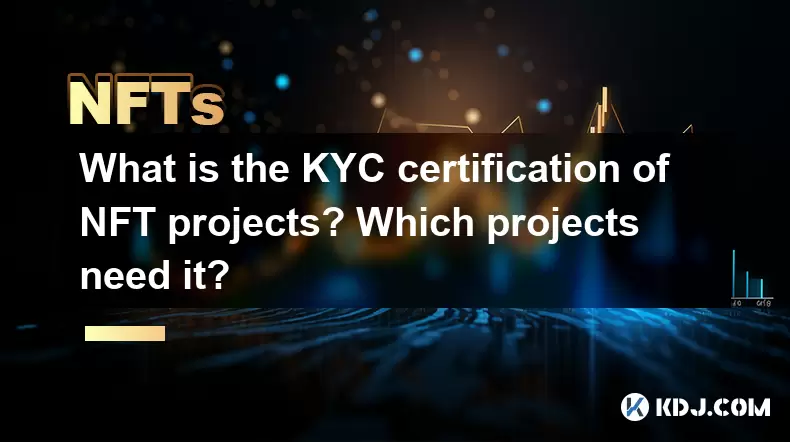
What is the KYC certification of NFT projects? Which projects need it?
Jun 21,2025 at 03:08pm
Understanding KYC Certification in the NFT SpaceKYC, or Know Your Customer, is a regulatory process used by businesses to verify the identity of their clients. In the context of NFT projects, KYC certification refers to the verification of user identities before they can participate in minting, trading, or selling NFTs on a platform. This practice is in...
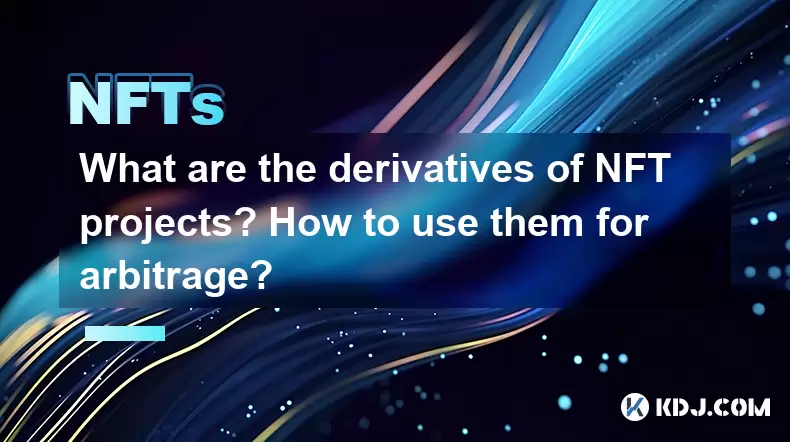
What are the derivatives of NFT projects? How to use them for arbitrage?
Jun 20,2025 at 06:14am
Understanding the Derivatives of NFT ProjectsNFTs, or non-fungible tokens, have evolved beyond simple digital collectibles. In recent years, derivatives of NFT projects have emerged as a new financial layer within the blockchain ecosystem. These derivatives are essentially financial instruments derived from the value and performance of underlying NFT as...

How are NFTs stored and traded? What are the common technical standards?
Jun 20,2025 at 08:49am
Understanding NFT Storage MechanismsNon-Fungible Tokens (NFTs) are digital assets that represent ownership of a unique item or piece of content, such as art, music, videos, or virtual real estate. The way NFTs are stored is crucial to their security and accessibility. Most NFTs are built on blockchain platforms like Ethereum, and the actual file—such as...

How to evaluate the value of NFT projects? Analysis from six dimensions
Jun 21,2025 at 02:28pm
1. Project Background and Team CredibilityEvaluating the value of NFT projects begins with a thorough understanding of its background and team composition. A credible project is usually backed by experienced developers, designers, and marketers who have a proven track record in blockchain or digital art industries. The presence of identifiable team memb...

What is the difference between NFT and digital collectibles? A must-read guide for beginners
Jun 19,2025 at 09:42pm
Understanding the Basics of NFTsNFTs, or Non-Fungible Tokens, are unique digital assets that represent ownership of a specific item or piece of content on the blockchain. Unlike cryptocurrencies such as Bitcoin or Ethereum, which are fungible and can be exchanged one-for-one, each NFT has distinct properties and cannot be directly replaced by another to...

How to use the whitelist mechanism of NFT projects to achieve early profits?
Jun 21,2025 at 03:49am
Understanding the Whitelist Mechanism in NFT ProjectsThe whitelist mechanism is a popular strategy used by NFT project developers to allocate early access or exclusive minting rights to a select group of users. This system allows participants on the whitelist to mint NFTs before they are released to the general public, often at lower prices and with few...

What is the KYC certification of NFT projects? Which projects need it?
Jun 21,2025 at 03:08pm
Understanding KYC Certification in the NFT SpaceKYC, or Know Your Customer, is a regulatory process used by businesses to verify the identity of their clients. In the context of NFT projects, KYC certification refers to the verification of user identities before they can participate in minting, trading, or selling NFTs on a platform. This practice is in...

What are the derivatives of NFT projects? How to use them for arbitrage?
Jun 20,2025 at 06:14am
Understanding the Derivatives of NFT ProjectsNFTs, or non-fungible tokens, have evolved beyond simple digital collectibles. In recent years, derivatives of NFT projects have emerged as a new financial layer within the blockchain ecosystem. These derivatives are essentially financial instruments derived from the value and performance of underlying NFT as...
See all articles

























































































